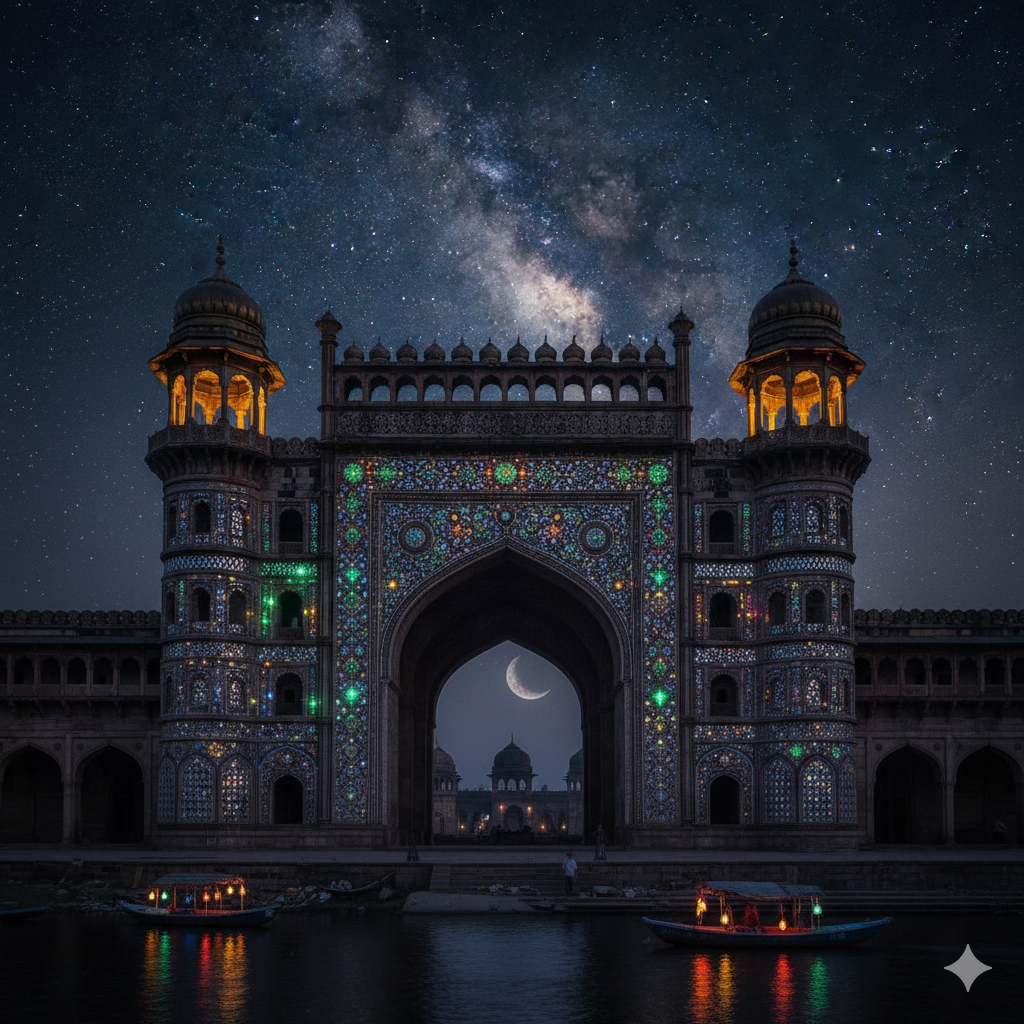Introduction
The Harappan Civilization, also known as the Indus Valley Civilization (IVC), flourished between 3300 BCE and 1300 BCE in the northwestern regions of the Indian subcontinent. While its core areas were in modern-day Punjab, Haryana, Sindh, and Gujarat, archaeological evidence suggests that the influence and reach of this civilization extended into parts of eastern Uttar Pradesh.
The spread of the Harappan Civilization into Uttar Pradesh provides valuable insights into trade networks, cultural diffusion, technological adoption, and urbanization in the Gangetic plains. This article presents a detailed analysis of the sites in Uttar Pradesh associated with the Harappan Civilization, their archaeological significance, and the socio-cultural implications of this expansion.
1. Geographical Overview of Uttar Pradesh in the Context of Harappan Expansion
Uttar Pradesh, located in the heart of the Gangetic plains, is bounded by the Ganga and Yamuna rivers, and bordered by the Vindhya hills to the south and the Himalayas to the north. The strategic location of Uttar Pradesh offered several advantages to the expansion of Harappan influence:
- Fertile alluvial plains: Suitable for agriculture and sustaining large populations.
- River systems: Ganga, Yamuna, and Ghaghara facilitated trade, communication, and cultural exchange.
- Proximity to western IVC sites: Allowed movement of goods, technologies, and cultural practices.
- Natural resources: Availability of stones, metals, and other raw materials facilitated craft production.
These geographical features helped Uttar Pradesh act as a contact zone between the Harappan heartland and the emerging Gangetic cultures.
2. Evidence of Harappan Presence in Uttar Pradesh
The Harappan influence in Uttar Pradesh is mostly identified through archaeological artifacts, pottery styles, and urban planning patterns. Although fully developed Harappan cities like Mohenjo-daro and Harappa are not found in Uttar Pradesh, several sites exhibit Harappan traits, particularly from the Late Harappan Phase (1900–1300 BCE).
2.1 Alamgirpur (Meerut District)
- Significance: Considered the easternmost Harappan site discovered so far.
- Findings: Red ware pottery with Harappan motifs, terracotta objects, copper implements, beads, and semi-precious stone ornaments.
- Urban characteristics: Evidence of mud-brick structures suggests planned settlements.
- Implications: Indicates trade and cultural diffusion from the Harappan heartland into the upper Ganga basin.
2.2 Jhusi (Allahabad District)
- Significance: Multi-period site showing Late Harappan and Neolithic phases.
- Findings: Painted gray ware, typical Harappan pottery, beads, and tools.
- Role: Acts as a transition zone between Harappan and emerging local Gangetic cultures.
- Implications: Shows interaction between Harappan settlers and indigenous populations, influencing agriculture and craft production.
2.3 Sanauli (Baghpat District)
- Significance: Recent discoveries suggest Harappan influence in the form of burial practices and fortified settlements.
- Findings: Pottery, ornaments, and copper tools with Harappan stylistic elements.
- Implications: Demonstrates the cultural and technological transmission of the Harappan civilization into western Uttar Pradesh.
2.4 Atranjikhera (Auraiya/Etah District)
- Significance: Chalcolithic and Late Harappan cultural layers detected.
- Findings: Terracotta figurines, pottery with geometric designs, and stone tools resembling Harappan types.
- Implications: Shows the eastward diffusion of Harappan material culture into the central Gangetic plains.
2.5 Other Minor Sites
- Sarai Nahar Rai (Mirzapur District): Evidence of Late Harappan pottery and microliths.
- Lal Ganj (Meerut District): Terracotta objects and beads reflecting Harappan influence.
These sites collectively demonstrate that Harappan influence extended beyond its core Indus Valley regions into eastern India, particularly along riverine corridors.
3. Nature of Harappan Influence in Uttar Pradesh
The Harappan presence in Uttar Pradesh can be characterized as diffused and adaptive rather than direct urban colonization:
- Pottery and Material Culture:
- Red ware, painted pottery, and terracotta figurines reflect Harappan stylistic elements.
- Adoption of Harappan pottery by local communities indicates cultural assimilation.
- Settlement Patterns:
- Small villages and semi-urban centers rather than fully planned Harappan cities.
- Use of mud-brick construction shows knowledge transfer from western sites.
- Trade and Exchange:
- Beads, copper tools, and semi-precious stones suggest long-distance trade networks linking Harappan centers to Uttar Pradesh.
- Likely trade routes included Ganga and Yamuna rivers facilitating movement of goods and ideas.
- Beads, copper tools, and semi-precious stones suggest long-distance trade networks linking Harappan centers to Uttar Pradesh.
- Agriculture and Subsistence:
- Introduction of domesticated crops and advanced irrigation techniques influenced local farming.
- Evidence suggests mixed economy, combining traditional agriculture with Harappan crop varieties.
- Introduction of domesticated crops and advanced irrigation techniques influenced local farming.
- Cultural Diffusion:
- Symbolic and ritual elements, such as burial practices and terracotta figurines, indicate adoption of Harappan religious and cultural concepts.
4. Chronological Framework
Harappan influence in Uttar Pradesh is primarily linked to the Late Harappan period (1900–1300 BCE):
- Early Harappan Phase (3300–2600 BCE): Little or no evidence in Uttar Pradesh.
- Mature Harappan Phase (2600–1900 BCE): Limited eastern expansion; artifacts may have traveled via trade.
- Late Harappan Phase (1900–1300 BCE): Most material evidence in Uttar Pradesh appears during this period.
This chronological framework indicates a gradual eastward expansion as the Harappan heartland declined, giving rise to regionalized cultures along the Gangetic plains.
5. Factors Facilitating Harappan Expansion into Uttar Pradesh
Several factors contributed to the spread of Harappan culture into Uttar Pradesh:
- Geographical Connectivity: Rivers like the Ganga and Yamuna enabled movement of people and goods.
- Fertile Plains: Suitable for agriculture and supporting growing populations.
- Decline of Core Harappan Centers: As Mohenjo-daro and Harappa declined, groups migrated eastward.
- Trade and Resource Extraction: Copper, semi-precious stones, and other resources were available in eastern regions.
- Cultural Interaction: Local populations adopted Harappan techniques while maintaining indigenous traditions.
6. Interaction with Local Cultures
The Harappan expansion into Uttar Pradesh was characterized by cultural integration rather than colonization:
- Hybrid Pottery: Local pottery fused with Harappan designs.
- Agricultural Practices: Introduction of crops and farming techniques influenced local Neolithic and Chalcolithic communities.
- Burial Customs: Some Late Harappan burial practices were incorporated into local traditions.
- Crafts and Metallurgy: Knowledge of copper tools, beads, and ornament-making was transmitted to local communities.
This interaction laid the foundation for regionalized post-Harappan cultures, including the Ochre Coloured Pottery (OCP) culture, which emerged in the Gangetic plains.
7. Archaeological Methodology
The study of Harappan sites in Uttar Pradesh involves:
- Excavation Techniques: Stratigraphic excavation to identify multiple cultural layers.
- Typology Analysis: Classifying artifacts such as pottery, beads, and tools to determine Harappan traits.
- Radiocarbon Dating: Dating organic remains to establish chronological sequences.
- Comparative Analysis: Comparing artifacts with core Harappan sites to confirm cultural connections.
- GIS Mapping: Documenting site locations and riverine trade routes.
These methodologies allow researchers to reconstruct the extent and nature of Harappan influence in the region.
8. Significance of Harappan Sites in Uttar Pradesh
- Historical Continuity: Illustrates the transition from Harappan to Gangetic cultures.
- Cultural Diffusion: Demonstrates the spread of technological, artistic, and agricultural innovations.
- Urbanization Patterns: Provides insights into village planning, fortification, and settlement hierarchy.
- Trade Networks: Reveals long-distance trade links between Harappan centers and eastern regions.
- Socio-Economic Insights: Helps understand livelihood, craft specialization, and cultural adaptation.
The sites act as an educational resource for understanding early human civilization in northern India.
9. Challenges and Preservation
Despite their importance, Harappan sites in Uttar Pradesh face challenges:
- Urbanization and Industrialization: Modern construction threatens archaeological layers.
- Erosion and River Changes: Flooding may damage site integrity.
- Limited Awareness: Many sites remain unprotected or unexcavated.
- Need for Systematic Research: Comprehensive study of Late Harappan presence is still ongoing.
Efforts by the Archaeological Survey of India (ASI) aim to document, preserve, and study these sites.
10. Educational and Research Implications
Harappan sites in Uttar Pradesh serve as a bridge between the Indus Valley core and eastern cultures:
- Provide case studies for archaeology, anthropology, and history students.
- Offer insights into cultural transmission, adaptation, and technological innovation.
- Help reconstruct the socio-economic and ritual life of Late Harappan communities.
- Contribute to understanding the formation of post-Harappan regional cultures, including OCP and early Iron Age settlements.
By studying these sites, researchers can trace the eastward trajectory of one of the world’s earliest urban civilizations.
Conclusion
The expansion of the Harappan Civilization into Uttar Pradesh highlights the cultural, technological, and economic influence of the Indus Valley beyond its core region. Sites such as Alamgirpur, Jhusi, Sanauli, Atranjikhera, and others reveal settlement patterns, pottery styles, metallurgy, and trade networks, illustrating a gradual diffusion of Harappan traits into the eastern Gangetic plains.
This expansion was not mere colonization but cultural integration, resulting in hybrid material culture and paving the way for regional post-Harappan civilizations. The study of these sites provides a comprehensive understanding of prehistoric urbanization, technological diffusion, and socio-cultural transformation in northern India.
By examining the Harappan presence in Uttar Pradesh, scholars gain a broader perspective on early Indian civilization, its eastward spread, and the interactions between core and peripheral regions—making these sites invaluable for educational, research, and heritage purposes.




